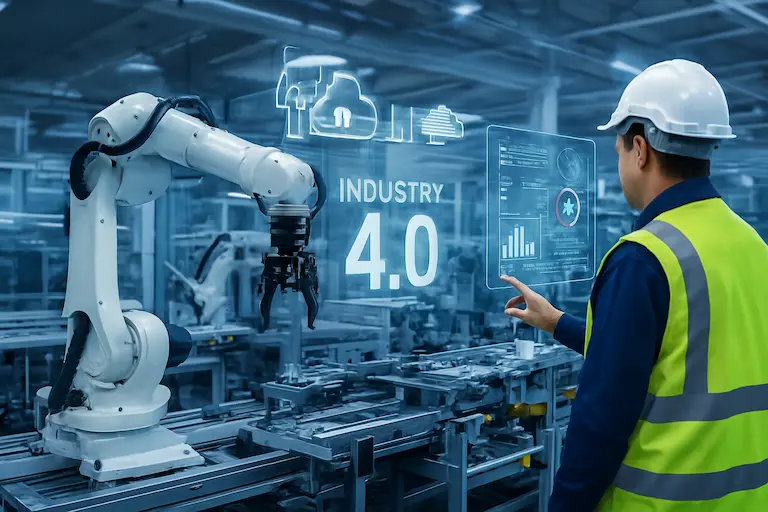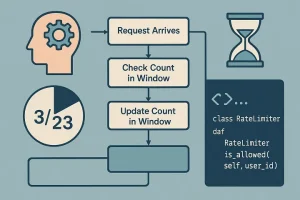European Industry 4.0 Investments Rise: Driving the Future of Manufacturing
Industry 4.0 is revolutionizing manufacturing and industrial processes worldwide, and Europe is no exception. In recent years, European Industry 4.0 investments have surged significantly, reflecting the continent’s commitment to digital transformation and maintaining global competitiveness. This trend is reshaping how factories operate, optimizing supply chains, and enhancing productivity through cutting-edge technologies like the Internet of Things (IoT), artificial intelligence (AI), and advanced robotics.
Understanding Industry 4.0 in the European Context
At its core, Industry 4.0 represents the fourth industrial revolution, where traditional manufacturing is integrated with digital technologies to create “smart factories.” These factories leverage interconnected systems, data analytics, and automation to boost efficiency and flexibility while reducing costs and downtime. Europe’s diverse industrial landscape—from automotive hubs in Germany to advanced electronics manufacturing in France and Italy—makes Industry 4.0 adoption a critical factor for preserving the region’s economic strength.
Why European Industry 4.0 Investments Are Increasing
Several driving forces underpin the recent rise in Industry 4.0 investments across Europe:
1. Global Competition and the Need for Innovation
Europe faces stiff competition from regions like Asia and North America, where smart manufacturing techniques have accelerated productivity gains. To stay ahead or at least on par, European manufacturers are investing heavily in Industry 4.0 technologies. This strategy is essential in sectors like automotive, aerospace, and chemicals, where innovation cycles are shortening rapidly.
2. Government Support and Strategic Frameworks
Federal and EU-level initiatives have offered substantial funding and policy support to encourage digital transformation. Programs like Horizon Europe and the Digital Europe Programme allocate billions to advance Industry 4.0 technologies, support research and development, and foster cross-border collaboration. These initiatives lower the barriers for small and medium-sized enterprises (SMEs) to adopt new tech, broadening the impact across the entire industrial ecosystem.
3. Post-Pandemic Recovery and Resilience Building
The COVID-19 pandemic exposed vulnerabilities in global supply chains and accelerated the urgency for automation and remote monitoring capabilities. European companies have responded by increasing investments in Industry 4.0 to boost resilience, agility, and transparency in their operations—features critical for navigating unforeseen disruptions.
Key Technologies Fueling Industry 4.0 Investments
Several innovations are at the heart of Europe’s rising investment levels:
- IoT and Connectivity: Sensors and connected devices enable real-time monitoring of equipment and materials, providing data that can improve maintenance schedules and prevent failures.
- Artificial Intelligence and Machine Learning: These technologies analyze vast amounts of data to optimize production processes and predict demand trends.
- Robotics and Automation: Collaborative robots (cobots) assist humans, improve precision, and reduce manual labor in hazardous environments.
- Digital Twins: Virtual replicas of physical systems allow companies to simulate and optimize production processes before implementation.
- Cloud Computing and Cybersecurity: Cloud platforms facilitate data sharing and real-time analytics, while cybersecurity safeguards sensitive industrial information.
Benefits of Increased Industry 4.0 Investments in Europe
European manufacturers are reaping multiple advantages from these strategic investments:
Enhanced Productivity and Efficiency
Smart factories driven by Industry 4.0 technologies operate with higher uptime and lower waste. Automated processes speed up production without compromising quality, translating into higher output and lower operational costs.
Improved Sustainability
By reducing energy consumption and material waste through precision manufacturing and real-time monitoring, European companies contribute to environmental goals and regulatory compliance.
Job Transformation and Skill Development
While automation can shift job roles, Industry 4.0 investments often come paired with significant upskilling efforts. Employees move into more analytical, maintenance, and oversight roles, driving a knowledge-intensive workforce.
Strengthened Supply Chains
Smart, interconnected supply chains improve transparency, traceability, and responsiveness—a critical advantage in today’s volatile market environment.
Challenges and the Road Ahead
Despite encouraging trends, several challenges remain. The complexity and cost of implementing Industry 4.0 technologies can be daunting, especially for SMEs. Additionally, cybersecurity risks grow as more devices and systems connect online. Lastly, there is a continuous need to address regulatory and standardization issues to ensure smooth cross-border industrial collaboration.
However, with growing investments and supportive policy frameworks, Europe is on a promising path toward solidifying its position as a leader in the fourth industrial revolution.
Conclusion
The rise in European Industry 4.0 investments signals a transformative era for European manufacturing. By embracing advanced technologies and smart manufacturing practices, Europe is crafting resilient, efficient, and sustainable industrial ecosystems. While challenges exist, the region’s commitment to innovation and collaboration provides a strong foundation for future growth and global leadership in Industry 4.0. As these investments continue, the benefits will ripple through the economy, workforce, and environment, underscoring Industry 4.0’s role as a cornerstone of Europe’s industrial future.




